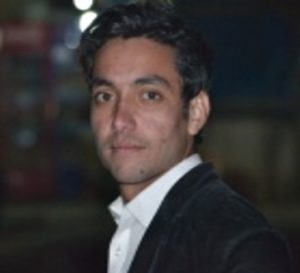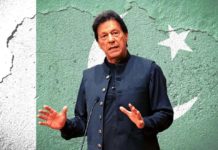Disclaimer: The Eqbal Ahmad Centre for Public Education (EACPE) encourages critical and independent thinking and believes in a free expression of one’s opinion. However, the views expressed in contributed articles are solely those of their respective authors and do not necessarily reflect the position or policy of the EACPE.
Few days ago, I was on my way to college when I observed an incident – something that compelled me to write about this very issue. When I stepped down from the bus and moved towards my hostel, 4 children having age between 5 to 10 years rushed towards me and requested me to arrange food for them. I brought them to nearby hotel. Soon, I realized the case was not so simple.
When I asked them why they’re out of their homes at this tender age, their reply shocked me. They told me that they had fled away from a Madrassa (seminary) and had journeyed around 60-kilometer distant on feet because they had no money to afford any public transport. The eyes of those children became red due to crying all the way. There were no shoes in their feet and their clothes were also torn place by place. I asked who brought them there in madrassa and why they had fled?. They replied that they were brought there by a religious cleric for religious education and after two days they fled away as the treatment of teachers of madrassa was not good with them and it was difficult for them to survive in such an atmosphere. The children were the resident of Swat district and the madrassa was somewhere in Balakot, District Mansehra. Now imagine the distance between these two places and the age of these children. I think no one would be ready to send their children aged below 10 years too far for any kind of education, but sadly people are doing so in Pakistan.
In almost all seminaries the only relationship between students and teachers is based on fear.
This was just one story of these children but there are number of children who have been suffering in these Madrassa and even their own families are directly responsible for it. Here, I am not criticizing the religious education or institution but the way they are teaching education is not up to the mark.
The basic features of majority of madrasas in Pakistan are: first, the students are mainly between 5 to 16 years of age; second, they all belong to poor families; and third, they belong to very far flung and backward areas of Pakistan, especially KP and FATA. Now if we take a look at this matter intellectually and from the child nature perspective, it seems difficult for children to learn religion at very early age because religious teaching has its own complexity. For example: Quran itself is a book of knowledge but there are different interpretations by different scholars and sects, and hence, a child of age of 6 or 8 couldn’t understand these things. He could only memorize things without any understanding.
Moreover, education needs a friendly environment where one can communicate with teachers and share one’s problems with them but this thing is totally missing in these religious education institutions in Pakistan. In almost all seminaries the only relationship between students and teachers is based on fear. You have to obey what teachers orders either wrong or right because the teacher never tries to build the environment where student can ask questions. Due to this strictness and fear factor, most of the student finally lost their tenderness and adopt extremism. We can see all suicide bombers get their training in madrassas or similar institutions.
In addition, a very important aspect of Madrasas is the facilities that are available there for students. Proper food, health, physical and social facilities are play a very important role in flourishing the personality of children, but madrasas often lack them. Due to unavailability of these facilities what kind of problems these children would face in future that is another discussion but simply this is unfair and no less than cruelty with children.
These are just the dominant features which are based on our observation from outside of these institutions but what happens inside is more alarming. For example: there are cases of sexual violence, promotion of extremism among the children and many more but these things are not discussed in our discourse. Due to atmosphere of religious extremism, everyone keeps mum on it. But it is the question of our children and their future so it should be questioned.
What we can do or what our responsibilities should be needs attention. I think first of all we should keep our children away from Madrassas till this institution is reformed. Moreover, it is important to provide our children broad-based and quality education for 12 years (till their intermediate in Pakistan). After the completion of broad-based education, it should be left to children to decide their future and let them adopt what kind of education they want. This is the way to save our future and children from the exploitation in the name of religious education.
 The writer is the student of Pakistan Studies at Government College Mansehra. He tweets as @abidhashnagar and can be reached at abidalimn121@gmail.com
The writer is the student of Pakistan Studies at Government College Mansehra. He tweets as @abidhashnagar and can be reached at abidalimn121@gmail.com



 The writer is the student of Pakistan Studies at Government College Mansehra. He tweets as
The writer is the student of Pakistan Studies at Government College Mansehra. He tweets as 



